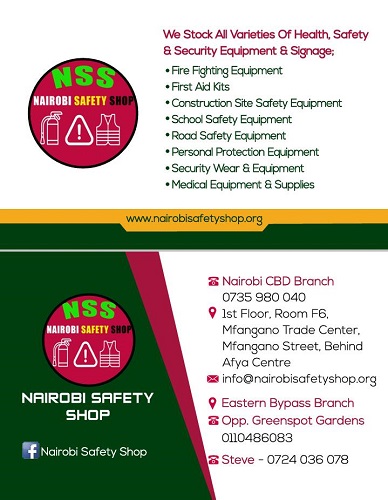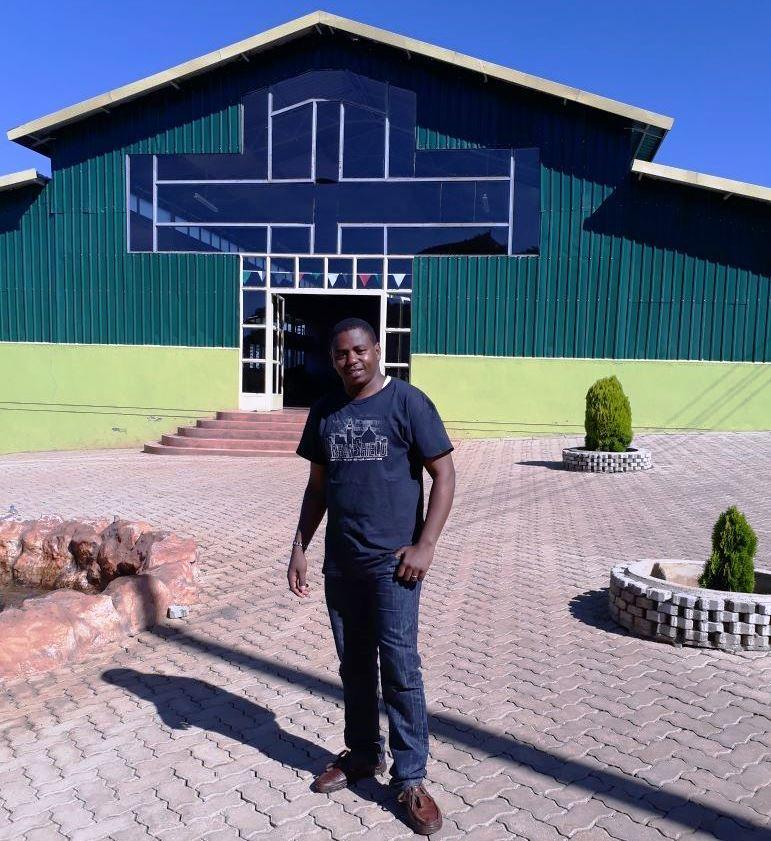In today’s dynamic work environments, maintaining high standards of safety and health is essential. As Ambassador Steve Mbugua, the globally recognized Ambassador of Safety, I am excited to introduce our comprehensive Occupational Health and Safety Training Course. With a mission to build a robust culture of safety, this course is designed to equip individuals and organizations with the knowledge and skills needed to create a secure and compliant workplace.
Drawing on years of experience and a deep understanding of global safety standards, I have developed this training program to address the diverse challenges faced in various industries. Our course covers essential topics such as risk management, regulatory compliance, emergency preparedness, and health promotion. By integrating practical exercises, real-world case studies, and interactive content, we ensure that participants not only learn but also apply safety principles effectively.
Join us in advancing safety excellence and fostering a culture where every individual can thrive in a safe and healthy environment. Through this course, you will gain the expertise needed to enhance workplace safety, prevent accidents, and contribute to a culture of well-being.
Safety is a fundamental aspect of any environment, whether in the workplace, at home, or in public spaces. Educating individuals and organizations on the importance of safety is essential to prevent accidents, injuries, and fatalities. I have provided a comprehensive information on safety awareness, sensitization, and training. It covers different types of safety training, methods for creating safety awareness, the benefits of safety training, the needs of various society groups, the negative impacts of inadequate training, and available safety professional trainings and certifications.
Safety Awareness, Sensitization, and Training
Safety Awareness
Safety awareness involves understanding the potential hazards in a particular environment and knowing how to prevent accidents. It includes recognizing unsafe conditions, understanding safety protocols, and being proactive in maintaining a safe environment.
Sensitization
Sensitization is the process of making individuals and organizations aware of safety issues and the importance of adhering to safety standards. It involves communication, education, and the promotion of safety culture.
Training
Safety training provides individuals with the knowledge and skills needed to perform their tasks safely. It includes practical instructions, demonstrations, and hands-on practice to ensure competence in safety procedures.
Types of Safety Training
1. Fire Safety Training
Purpose: To educate employees on fire prevention, emergency response, and evacuation procedures.
Key Components:
• Fire Prevention: Identifying fire hazards, safe use of equipment, and storage of flammable materials.
• Emergency Response: Use of fire extinguishers, evacuation routes, and assembly points.
• Evacuation Drills: Conducting regular drills to practice evacuation procedures and ensure swift and safe exits.
2. First Aid Training
Purpose: To equip employees with basic medical skills to provide immediate assistance in case of injuries or medical emergencies.
Key Components:
• Basic First Aid: Treating wounds, burns, fractures, and other common injuries.
• Cardiopulmonary Resuscitation (CPR): Techniques for administering CPR to individuals experiencing cardiac arrest.
• AED Use: Training on automated external defibrillator (AED) use for cardiac emergencies.
3. CPR Training
Purpose: To teach employees how to perform CPR effectively in emergencies to maintain blood circulation and oxygenation.
Key Components:
• Hands-on Practice: Simulated scenarios to practice chest compressions and rescue breathing.
• Recognition of Emergencies: Identifying when CPR is necessary and understanding the chain of survival.
• Team Coordination: Integrating CPR with emergency response procedures and professional medical assistance.
4. Hazardous Materials Handling
Purpose: To educate employees on safe handling, storage, and disposal of hazardous substances to prevent exposure and environmental contamination.
Key Components:
• Identification: Recognizing hazardous materials through labeling and safety data sheets (SDS).
• Risk Assessment: Evaluating risks associated with different types of hazardous materials.
• Personal Protective Equipment (PPE): Selecting and using appropriate PPE such as gloves, goggles, and respirators.
• Emergency Response: Procedures for spills, leaks, and exposure incidents.
5. Personal Protective Equipment (PPE) Training
Purpose: To train employees on the proper selection, use, and maintenance of PPE to minimize exposure to workplace hazards.
Key Components:
• Types of PPE: Overview of different types of PPE (e.g., eye protection, hearing protection, respiratory protection).
• Fit and Adjustment: Ensuring PPE fits properly and is worn correctly.
• Maintenance: Cleaning, inspection, and storage of PPE to ensure effectiveness.
• Limitations: Understanding the limitations of PPE and when additional controls are necessary.
6. Emergency Evacuation Training
Purpose: To prepare employees to respond safely and efficiently during emergencies requiring evacuation.
Key Components:
• Evacuation Plans: Familiarization with evacuation routes, assembly points, and procedures.
• Communication: Methods for alerting employees about emergencies and evacuation instructions.
• Special Situations: Addressing scenarios such as assisting individuals with disabilities or handling hazardous materials spills during evacuation.
7. Workplace Ergonomics
Purpose: To optimize the design of workspaces and tasks to prevent musculoskeletal disorders and improve comfort and productivity.
Key Components:
• Workspace Design: Adjusting workstation layout, furniture, and equipment to promote neutral posture and reduce strain.
• Task Modification: Techniques for varying tasks, incorporating breaks, and rotating job responsibilities.
• Employee Education: Training on ergonomic principles and recognizing early signs of ergonomic-related discomfort.
8. Lockout/Tagout Procedures
Purpose: To prevent accidental startup of equipment during maintenance or servicing, which could result in injuries or fatalities.
Key Components:
• Lockout/Tagout (LOTO) Devices: Use of locks, tags, and other devices to secure energy sources.
• Procedure Development: Developing and following step-by-step procedures for isolating energy sources.
• Verification: Ensuring equipment is de-energized and safe to work on before beginning maintenance activities.
• Training and Authorization: Training authorized employees on LOTO procedures and ensuring compliance with regulatory requirements.
9. Electrical Safety
Purpose: To reduce the risk of electrical hazards such as shocks, burns, and fires in the workplace.
Key Components:
• Hazard Recognition: Identifying electrical hazards, including exposed wires, overloaded circuits, and damaged equipment.
• Safe Work Practices: Procedures for working near electrical sources, including de-energizing equipment and using insulated tools.
• Grounding and Bonding: Understanding principles of grounding and bonding to prevent electrical shocks.
• Emergency Response: Actions to take in case of electrical incidents, including first aid and evacuation procedures.
10. Confined Space Entry
Purpose: To ensure safe entry into confined spaces such as tanks, vaults, and pipelines where hazardous conditions may exist.
Key Components:
• Risk Assessment: Evaluating hazards specific to confined spaces, including lack of oxygen, toxic gases, and engulfment risks.
• Permit Systems: Implementing permit-required confined space entry procedures, including atmospheric testing and entry permits.
• Ventilation and Air Monitoring: Procedures for ventilation and continuous monitoring of air quality inside confined spaces.
• Emergency Rescue: Planning and training for confined space rescue operations, including communication and retrieval equipment.
11. Machine Operation Safety
Purpose: To prevent injuries associated with operating machinery and equipment in industrial settings.
Key Components:
• Training on Equipment: Operating procedures, startup and shutdown sequences, and emergency stops.
• Safety Guards and Devices: Proper installation and use of guards, barriers, and safety interlocks.
• Maintenance Checks: Regular inspections and maintenance to ensure machinery is in safe working condition.
• Lockout/Tagout Procedures: Coordination with LOTO procedures when performing maintenance or repairs.
12. Fall Protection Training
Purpose: To prevent falls from heights through proper use of fall protection equipment and safe work practices.
Key Components:
• Equipment Use: Harnesses, lanyards, and anchor points for working at heights.
• Fall Prevention: Guardrails, safety nets, and barriers to minimize the risk of falls.
• Training on Inspection: Inspecting fall protection equipment before each use and recognizing signs of wear or damage.
• Rescue Procedures: Procedures for rescuing a fallen worker using appropriate equipment and techniques.
13. Chemical Safety Training
Purpose: To ensure safe handling, storage, and disposal of chemicals to prevent exposure and environmental contamination.
Key Components:
• Hazard Communication: Understanding chemical labels, safety data sheets (SDS), and potential health hazards.
• Safe Handling Practices: Procedures for mixing, transferring, and using chemicals safely.
• Emergency Response: Spill response procedures, evacuation routes, and first aid measures for chemical exposure.
• Personal Protective Equipment (PPE): Selection and use of PPE such as gloves, goggles, and respirators.
14. Driver Safety Training
Purpose: To promote safe driving practices and reduce the risk of accidents on the road.
Key Components:
• Defensive Driving: Techniques for anticipating and reacting to potential hazards while driving.
• Vehicle Inspection: Pre-trip inspections and maintenance checks to ensure vehicle safety.
• Distracted Driving Prevention: Policies and training on avoiding distractions such as texting, using mobile devices, or eating while driving.
• Emergency Procedures: Response protocols for accidents, breakdowns, and adverse weather conditions.
15. Food Safety Training
Purpose: To ensure safe food handling practices to prevent foodborne illnesses and ensure food quality.
Key Components:
• Hygiene Practices: Handwashing, personal hygiene, and cleanliness standards for food handlers.
• Temperature Control: Proper cooking, cooling, and storage temperatures to prevent bacterial growth.
• Cross-contamination Prevention: Procedures for separating raw and cooked foods to avoid cross-contamination.
• HACCP Principles: Implementing Hazard Analysis Critical Control Points (HACCP) to identify and control food safety hazards.
16. Construction Safety Training
Purpose: To prevent injuries and fatalities in the construction industry through comprehensive safety education.
Key Components:
• Fall Prevention: Fall protection systems, scaffold safety, and ladder use.
• Electrical Safety: Working near power lines, equipment grounding, and use of GFCIs.
• Excavation Safety: Trenching procedures, cave-in prevention, and soil stability.
• Heavy Equipment Operation: Training on safe operation of cranes, forklifts, and other heavy machinery.
17. Healthcare Safety Training
Purpose: To protect healthcare workers, patients, and visitors from hazards in clinical settings.
Key Components:
• Infection Control: Hand hygiene, personal protective equipment (PPE), and isolation precautions.
• Patient Handling: Techniques for safe patient lifting, transferring, and repositioning.
• Emergency Preparedness: Response protocols for medical emergencies, fires, and natural disasters in healthcare facilities.
• Medication Safety: Procedures for administering medications safely and preventing medication errors.
18. Cybersecurity Training
Purpose: To educate employees on cybersecurity threats and best practices to protect organizational data and systems.
Key Components:
• Phishing Awareness: Recognizing phishing emails, social engineering tactics, and other cyber threats.
• Password Security: Creating strong passwords, using multi-factor authentication (MFA), and safeguarding login credentials.
• Data Protection: Encrypting sensitive data, controlling access permissions, and securely transferring information.
• Incident Response: Reporting suspicious activities, responding to data breaches, and mitigating cyber threats.
19. Office Safety Training
Purpose: To promote a safe and healthy work environment in office settings.
Key Components:
Ergonomics: Adjusting workstations, chairs, and keyboards to prevent musculoskeletal disorders and enhance comfort during prolonged computer use.
• Fire Safety: Familiarizing employees with evacuation routes, fire extinguisher locations, and emergency procedures specific to office environments.
• Electrical Safety: Safe use of office equipment, power strips, and cords to prevent electrical hazards such as shocks or fires.
• Slip, Trip, and Fall Prevention: Keeping walkways clear, using non-slip mats, and promptly addressing spills or tripping hazards.
• Workplace Violence Prevention: Recognizing signs of potential violence, de-escalation techniques, and reporting procedures.
• Emergency Preparedness: Conducting drills for evacuations, lockdowns, and other emergency scenarios specific to office settings.
• Security Awareness: Protecting sensitive information, securing office premises, and reporting suspicious activities or persons.
• Health and Wellness: Promoting physical and mental well-being through ergonomic assessments, stress management techniques, and employee assistance programs.
• Environmental Safety: Maintaining indoor air quality, managing hazardous materials, and ensuring proper disposal of office waste.
• Remote Work Safety: Guidelines for safe practices when working from home or other remote locations, including ergonomic setup, cybersecurity measures, and communication protocols.
20. Noise Protection Training
Purpose: To prevent hearing loss and other health issues related to exposure to excessive noise levels in the workplace.
Key Components:
• Noise Hazards: Identifying sources of noise in the workplace, including machinery, tools, and processes.
• Noise Exposure Limits: Understanding permissible exposure limits (PELs) and recommended exposure limits (RELs) for noise.
• Engineering Controls: Using soundproofing, noise barriers, and acoustic enclosures to reduce noise levels at the source.
• Personal Protective Equipment (PPE): Providing and training employees on the use of earplugs, earmuffs, or other hearing protection devices.
• Monitoring and Surveillance: Conducting regular noise assessments and monitoring employee exposure levels to ensure compliance with safety regulations.
In conclusion, safety training is a critical component of fostering a secure and prepared environment. Ambassador Steve Mbugua, as a renowned safety ambassador and trainer, emphasizes the importance of continuous learning and awareness. You can reach him via Whatsapp +254724036078, Email info@ambstevembugua.co.ke, Social Media Platforms as Amb Steve Mbugua, books and blogs on www.ambstevembugua.co.ke Through his comprehensive training sessions, seminars, and workshops, he empowers individuals and organizations to adopt a proactive approach to safety. By prioritizing safety education, we can build a culture of safety that protects lives and enhances overall well-being.
READ MORE
OHS Training Video
Conducting Safety Training, Sensitization and Awareness
Largest Safety Company
Building A Culture Of Safety



















